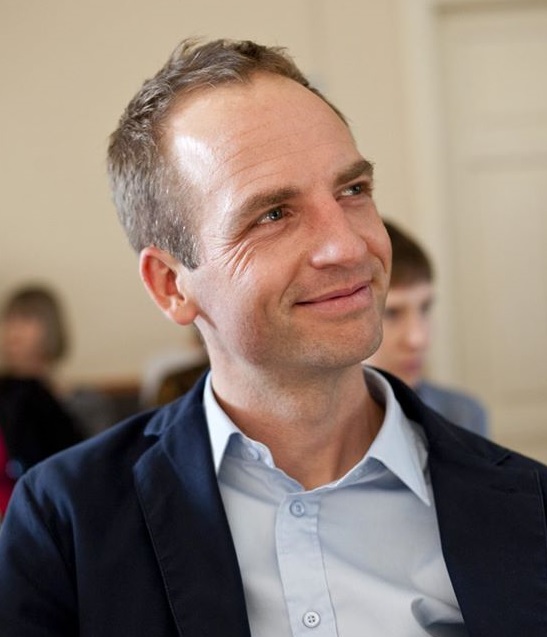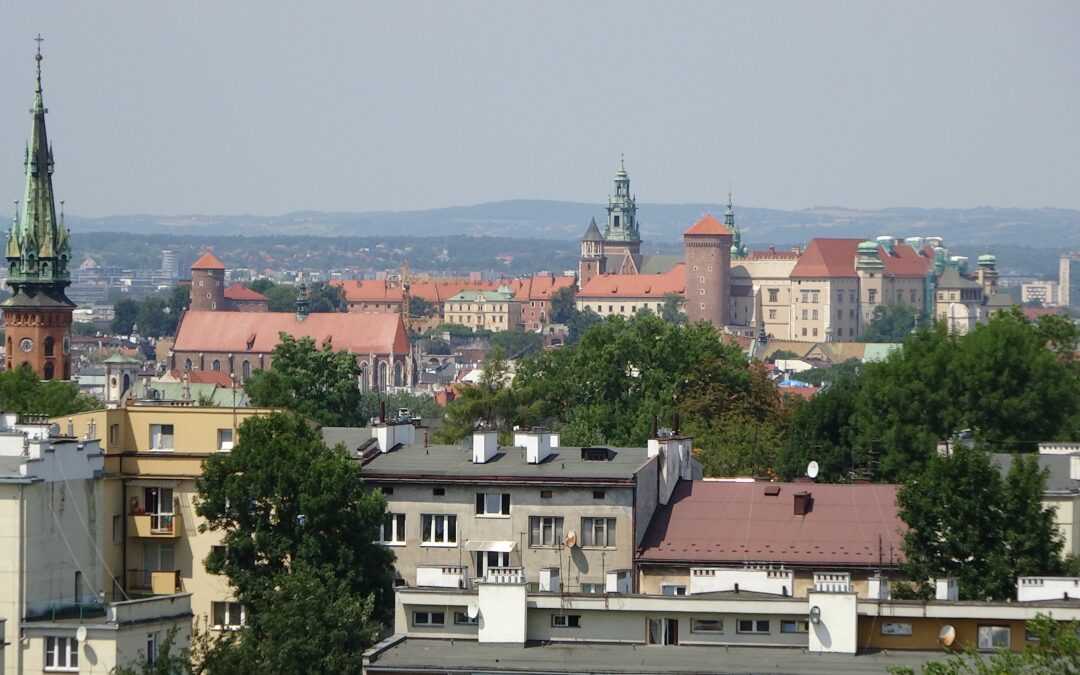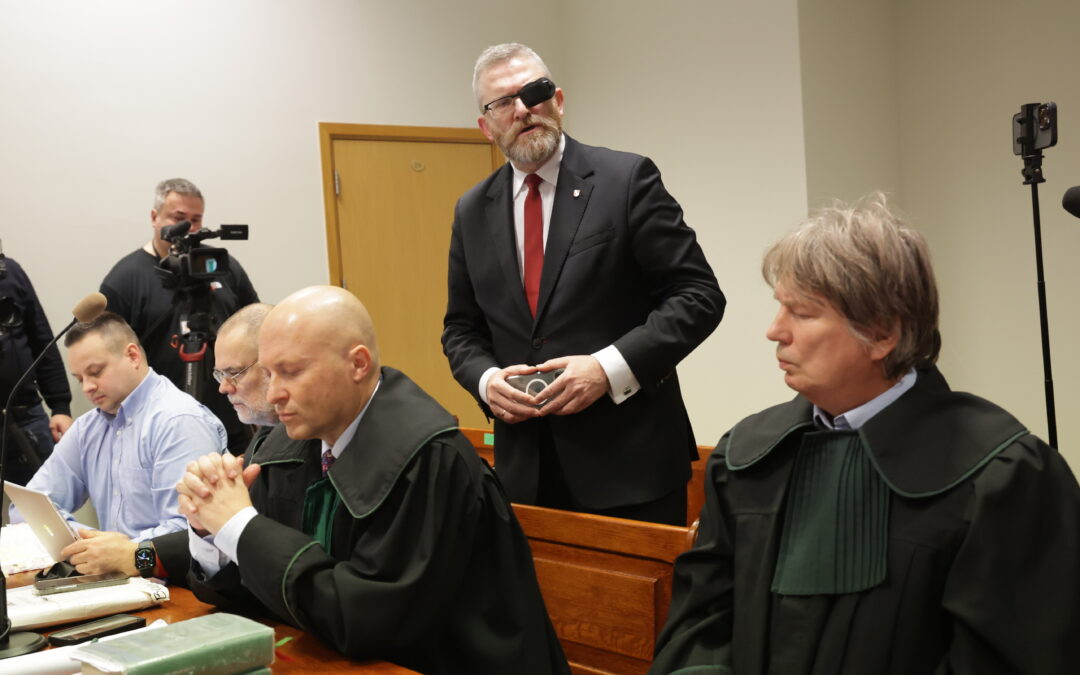The quality of air in Kraków has improved considerably since 2012, according to a new study. The city has long had some of the worst smog in Poland, which itself has the European Union’s most polluted air.
Kraków’s authorities have taken a number of steps in recent years to improve air quality, including in 2019 becoming the first city in Poland to ban the burning of coal and wood. The national authorities have also taken steps to tackle smog, though so far with limited impact.
The new report – which analysed air quality in Kraków and the Małopolska province that it is part of between 2012 and 2020 – was produced by scientists at AGH University of Science and Technology on behalf of Kraków Smog Alert, a social movement that campaigns for better air.
In Kraków, concentrations of PM2.5 and PM10 – two types of harmful particulate matter – were both around 45% lower in the 2019/20 heating season than they had been in 2012/13.
Elsewhere in Małopolska province, where the ban on burning coal and wood does not apply, air quality also improved, but much less. Concentrations of PM10 fell by 29% and PM2.5 – which, according to the World Health Organisation, is the most harmful form of air pollution – by 32% over the same period.
Dzięki uchwale antysmogowej liczba dni w trakcie sezonu grzewczego, kiedy stężenie dobowe PM10 przekracza poziom alarmowy (150 µg/m3) w @krakow_pl spadła z 11 do zera, a w przypadku poziomu informowania (100 µg/m3) z 35 do 2. pic.twitter.com/iLqAqwGJwN
— Polski Alarm Smogowy (@alarm_smogowy) January 26, 2021
As a consequence of the improvement, Kraków saw a steady decline in the number of days when the concentration of PM10 was at a level higher than the acceptable daily limit value, which for Poland is 50 µg/m3.
In heating seasons between 2012/13 and 2019/20, the number of days when concentrations reached the daily limit halved, from 125 to 64. The biggest annual drop came after the ban on burning coal and wood was introduced in 2019.
In that same year, Krakow also launched a mobile app that, as well as updating residents on air quality, allows them to report properties they suspect of burning illegal materials. They can do so by using their phone to send a geotagged photo of the building in question.
Kraków has launched an app that allows users who spot chimneys producing suspiciously dirty smoke (suggesting the burning of illegal substances such as coal or trash, which are a major cause of air pollution) to send a photo and geolocation data to the authorities to investigate pic.twitter.com/YpVo1Z7BRq
— Notes from Poland 🇵🇱 (@notesfrompoland) October 2, 2019
Meanwhile, the AGH study found that the number of days in Kraków when the PM10 “alarm level” of 150 µg/m3 was reached fell from 11 to zero over the 2012-20 period..
Levels of benzo(a)pyrene, a harmful substance caused by coal burning, were also down 43% in Kraków between 2014/15 and 2019/20. However, they went up by 14% in the rest of the province.
Despite the improvement, Kraków still continues to record high levels of pollution by European standards. On one day earlier this month, the city registered the third worst air pollution in the world, according to a ranking produced by IQAir, a Swiss air quality technology company.
Activists note that one cause of this is the fact that, while Kraków has taken steps to reduce pollutants, smaller surrounding towns and villages continue to burn low-quality coal and other fuels. The resultant smog affects the air in Kraków too.
The way that the city is encircled by a ring of pollution is often labelled the “Kraków obwarzanek” – a reference to the popular local bagel-type bread ring.
Dalej będziecie twierdzić, że to samochody dają popalić? To zobaczcie na słynny już „obwarzanek krakowski”.
Miłego wdechu, bo wydech szczęśliwie oczyszczony.@krakow_pl@SkawinskiAlarmS @alarm_smogowyDS @alarm_smogowy @RadioKrakow @zaplutyzsalonu @PowietrzeKrakow pic.twitter.com/TntTJd4D4l— Marek ✌🏻 (@marekrk) January 17, 2020
Efforts have also been made to tackle air pollution at national level. In 2018, the Polish government launched its “Clean Air” programme, theoretically the largest such scheme of its kind in Europe. It aimed to reduce smog by providing households with funds to replace old heaters and to improve insulation.
But the programme is in urgent need of reform if is to begin to meet its targets, according to Polish Smog Alert. The 103 billion zloty scheme promised to replace the three million old-fashioned coal furnaces burning in households around Poland within ten years, but only 70,000 have so far been removed, reports Gazeta Wyborcza.
“The high air pollution of recent days has shown that the fight with smog is standing still,” said Andrzej Guła from Polish Smog Alert. “I hope that the pace will speed up, because otherwise we can forget about clean air.”
The Polish city of Wrocław had the second worst air quality in the world this morning, while Warsaw was also in the bottom six, according to @IQAir's ranking.
Last week, Kraków was among the worst, as Poland suffers its annual winter smog problems: https://t.co/d9mVirEu9a pic.twitter.com/mL18Qb1qmo
— Notes from Poland 🇵🇱 (@notesfrompoland) January 18, 2021
The Clean Air programme was relaunched in May last year to make it easier for people to apply to have their heaters exchanged and to shorten waiting times, reports Gazeta Wyborcza.
The low uptake and poor implementation, with rural populations facing particular difficulties accessing funds, had led to reports that the European Commission was considering withdrawing funding for the scheme.
Main image credit: PxHere

Ben Koschalka is a translator, lecturer, and senior editor at Notes from Poland. Originally from Britain, he has lived in Kraków since 2005.




















